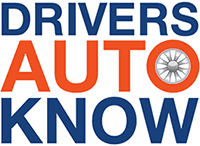The safety of small cars versus larger vehicles has long been a topic of debate. While it’s true that in a collision between a small car and a larger vehicle, the larger one will typically likely fare better due to its greater mass, the issue is more nuanced than a simple comparison of size.
Small cars offer certain advantages, such as ease of parking, better fuel economy, and lower maintenance costs. However, when it comes to crash safety, larger vehicles generally outperform small cars in tests conducted by organizations like the Insurance Institute for Highway Safety (IIHS).
Consider the example of a head-on collision between a Mini Cooper and a Dodge Durango. Despite being smaller and lighter, the Mini Cooper would likely sustain more damage in such an encounter due to the Durango’s greater mass and structural robustness. Additionally, larger vehicles tend to have lower rollover risks, although older SUVs may pose a danger in this regard.
However, advancements in vehicle safety technology have narrowed the gap between small and large cars. Modern SUVs equipped with electronic stability control (ESC) have reduced the risk of rollovers, making them safer options than older models. It’s also worth noting that severe frontal crashes, like those simulated in IIHS tests, are relatively rare, comprising less than 0.06% of all frontal crashes. Check out both NHTSA and IIHS so you can weigh your options and feel confident about your decision.
Ultimately, whether to choose a small car or a larger vehicle depends on individual priorities. Many times, it’s a financial one. While small cars may not offer the same level of safety as larger vehicles, they provide benefits in terms of maneuverability and affordability.
Whether prioritizing cost, convenience, or safety, there is no definitive “right” or “wrong” choice, empowering consumers to select the vehicle that best suits their lifestyle. Sharing information like this can help others make informed decisions when considering the safety of small cars.

